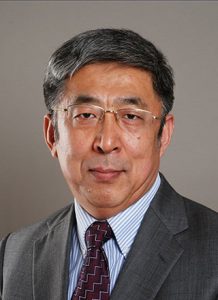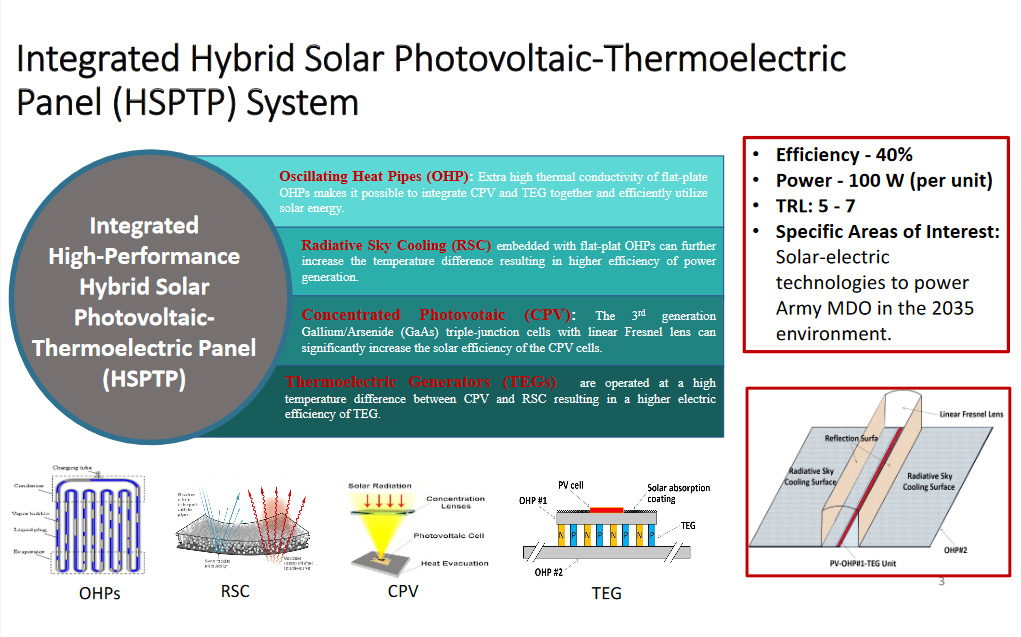June 04, 2020
Professor Bill Ma in the Department of Mechanical and Aerospace Engineering is proposing new electric power technology to support Army operations in 2035. Solar energy is expected to meet the energy demand for a variety of equipment associated with Army multi-domain operations in the future.

Prof. Ma presented his white paper during a public forum on May 18 to the National Academy of Sciences, Engineering, and Medicine.
Ma, who co-authored with Pengtao Wang, presented his white paper during a public forum on May 18 to the National Academy of Sciences, Engineering, and Medicine. A study committee appointed by the Board of Army Research and Development hosted the forum.
The proposal, “High-Performance Hybrid Solar Photovoltaic-Thermoelectric Panel,” suggests the device can achieve a high solar electric efficiency of up to 40% with a power output of 100 watts.
“It integrates state-of-the-art technological advances in concentrating solar photovoltaic cells, solar thermoelectric generator, oscillating heat pipe and radiative sky cooling panel, which can achieve a high solar-electric efficiency unmatched by any available technologies,” Ma wrote in the executive summary.
“In addition to reducing fossil fuel consumption, solar energy is attractive in terms of military security,” he wrote. “Larger-scale solar plants allow the military to maintain an independent source of power in case of natural disaster or cyberattack that disables the public grid. Medium-scale solar stations reduce the need for easily-attacked convoys to deliver diesel fuel to generators at military sites without access to conventional electricity. Small-scale mobile solar power units silently keep critical functions like radar, GPS, and satellite communication in hostile territory.”
His proposed hybrid solar electric system has a number of innovative features:
- A solar-electric efficiency of 40% can be achieved for a 100 W power output
- A compact design
- The proposed solar panel can be used as a single power source, or as a basic unit of moderate or large-scale systems
- High-performance passive cooling without additional electric power consumption
- No dependence on mechanical moving parts results in high reliability
- The simplicity of the proposed system supports cost-effective manufacturing and implementation
- The system efficiency and cost will benefit the rapid global expansion of the solar panel market.

Ma notes the U.S. Department of Defense has embraced clean energy sources in recent years, doubling its renewable power generation between 2011 and 2015. The Army has set a goal of achieving 25% of its total energy consumption from renewable sources by 2025. Ma said his proposed system would be available within two years, but his team will need $750,000 to develop and demonstrate a prototype.